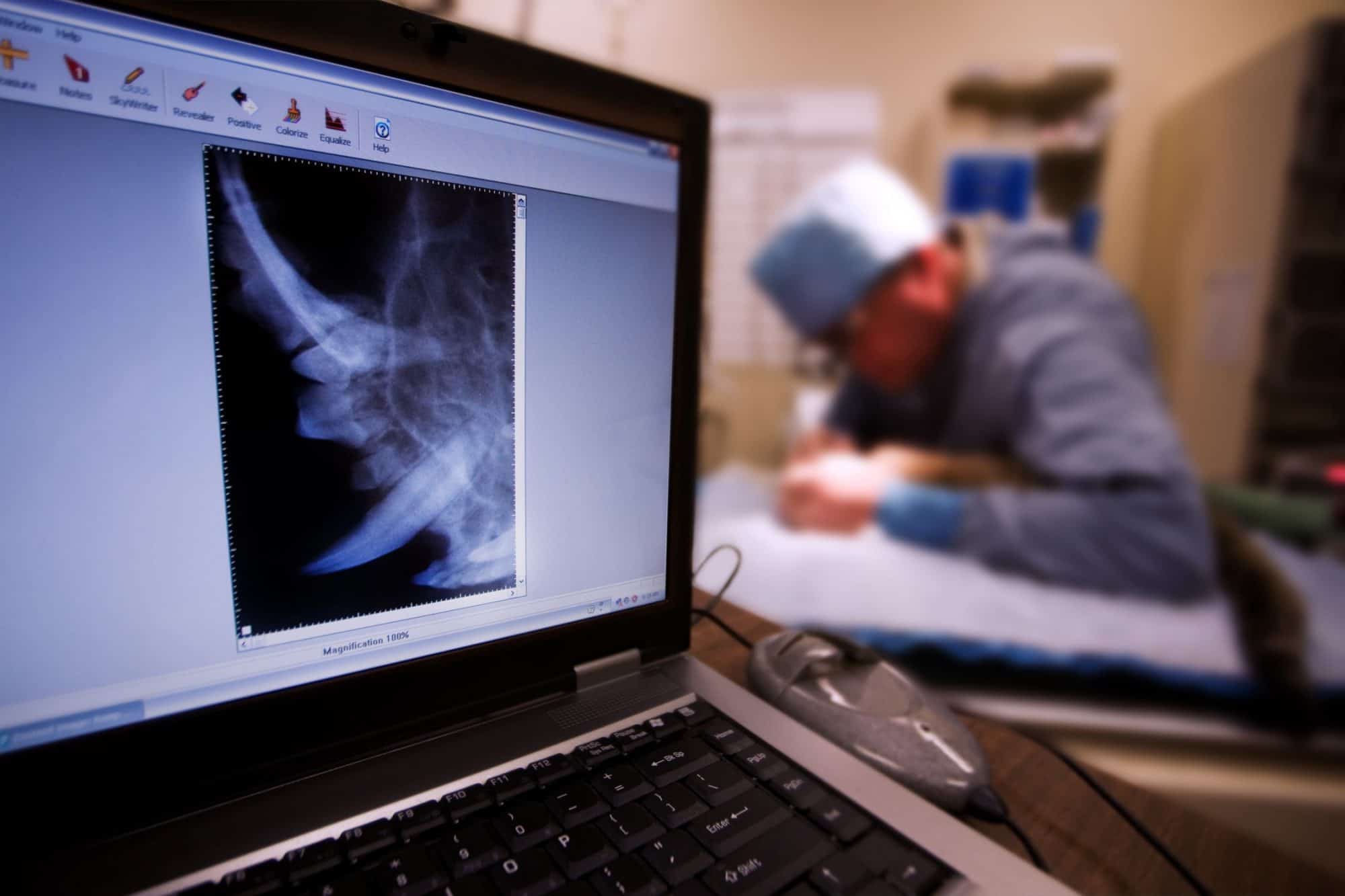All’s Fine Below The Gum Line: Benefits of Dental X-Rays For Pets

When your pet has periodontal disease, you may not even know it. This problem often sneaks up on pet owners and can be the result of persistent “we’ll get to it” syndrome.
The fact is that most pets have some form of dental disease by the time they reach 3 years of age, and bad breath may be the only noticeable hallmark. But by the time you notice “doggy breath,” periodontal disease may be wreaking havoc in your pet’s mouth. And most of the time, it’s underneath the gum line, where neither you nor your veterinarian can see it.
Bowman Veterinary Hospital knows that dental x-rays for pets are an important addition to their healthcare plan. Keep reading for the ins and outs of this simple and very useful process.
Brushing Up On Pet Oral Health
Periodontal disease begins when bacteria in the mouth combine with saliva to form plaque. If left untouched, plaque will harden into tartar, migrate below the gum line, can cause gingivitis and eventually periodontal disease. In addition to discomfort, dental disease can cause tooth loss, fractured teeth, and in severe cases, internal organ damage.
We cover a lot of ground at your pet’s annual or biannual wellness exam. One thing we check is inside your pet’s mouth. A quick flip of their lip can reveal a lot, but it’s still only a snapshot of what lies beneath.
Like An Iceberg
What we really need to know cannot be seen with the naked eye. Like an iceberg, the portion of the tooth that is visible is only a small fraction of the entire structure. Most of the tooth structures are under the gum surface. This means we rely on the accuracy and clarity of radiographs to give us the whole “picture”, so to speak.
In other words, we can’t truly speak to complete oral health without dental x–rays, since they are necessary to see any problems under the surface.
The Benefits of Dental X–Rays for Pets
There are many facets of periodontal disease that can easily be captured with dental x–rays. These may include:
- Gum disease
- Bone loss
- Tooth fractures
- Infections
- Oral tumors
Dental x–rays are an easy and painless way for us to see problems beneath the surface long before the effects are seen in your pet’s mouth – or their body.
A Word About Anesthesia
In order to minimize stress to your pet and capture accurate images, pets need to be anesthetized for dental x–rays, as well as the dental exam and cleaning. We understand that anesthesia may be concerning for some owners. That’s why we take every precaution to make each anesthesia as safe and comfortable as possible for each pet. All pets are carefully evaluated, monitored, and recovered from anesthetic events.
If you have any questions or concerns about dental health in pets, please give Bowman Veterinary Hospital a call.


